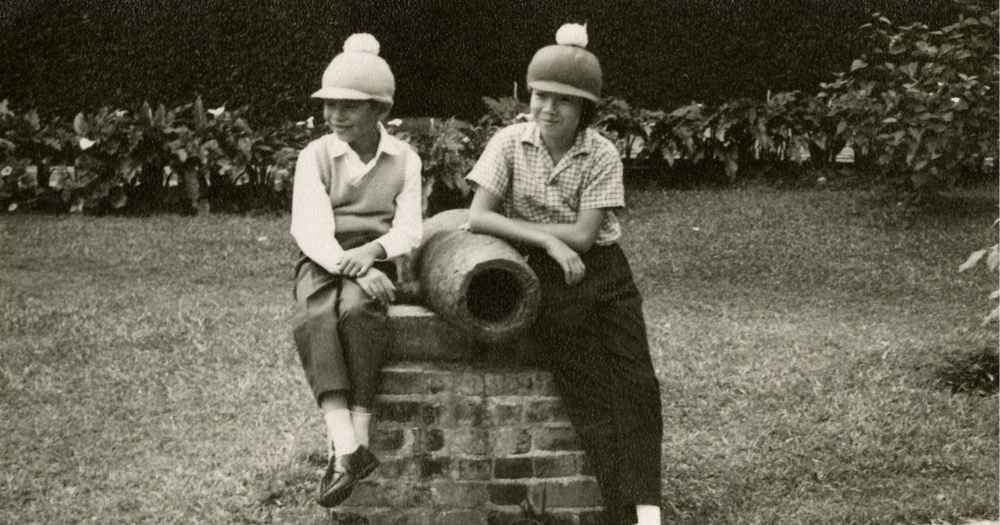Derpy colugo stranded on the ground surrounded by curious macaques, safely herded to tree by passers-by at Thomson
The colugo be like: O.O
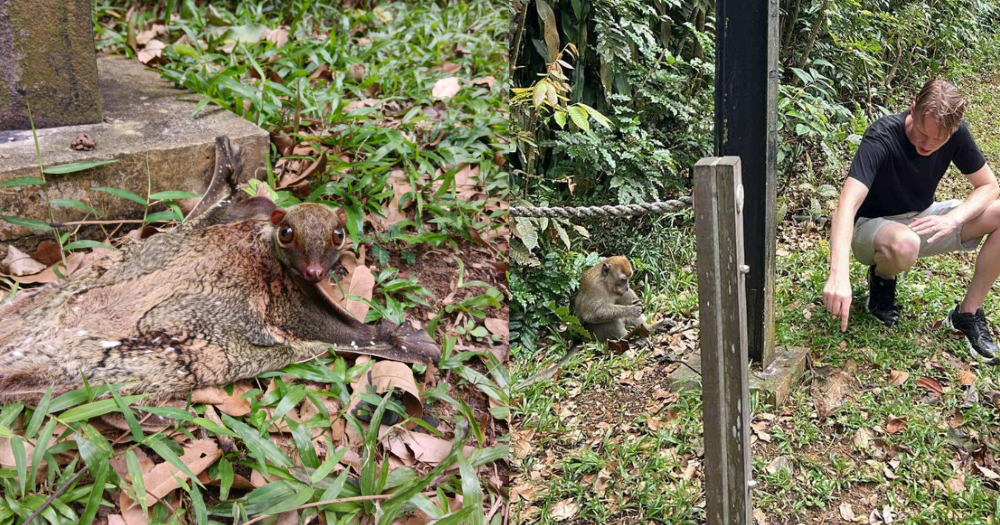
Matthew Fergusson-Stewart, his wife Elaine Seah and daughter Islay were walking at the Thomson Nature Park area on Sep. 8, 2024, at about 12:15pm, when something caught their eye.
They spotted a troop of about eight to ten macaques along Old Upper Thomson Road. A common sighting, Fergusson-Stewart explained.
However, three of the macaques were looking very closely at something on the ground.
When Fergusson-Stewart looked closer, he found to his astonishment that just next to a signpost, nearly camouflaged in the grass, was a brown, wide-eyed colugo:
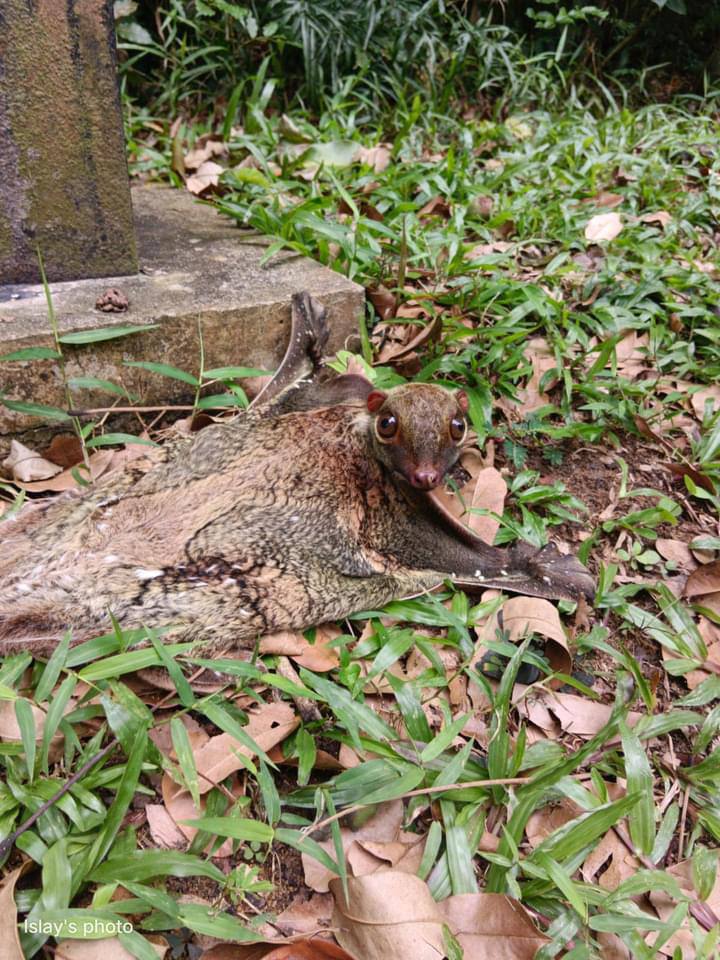 Photo courtesy of Islay Fergusson-Stewart.
Photo courtesy of Islay Fergusson-Stewart.
This was the first time Fergusson-Stewart and his family had ever seen a colugo on the ground, piquing their interest.
"We’ve seen them a few times before. My first sighting of a colugo on a tree was in Langkawi when I was around five years old," Islay explained.
If you squint at a photo Seah took, you can barely make out the colugo which Fergusson-Stewart is pointing at:
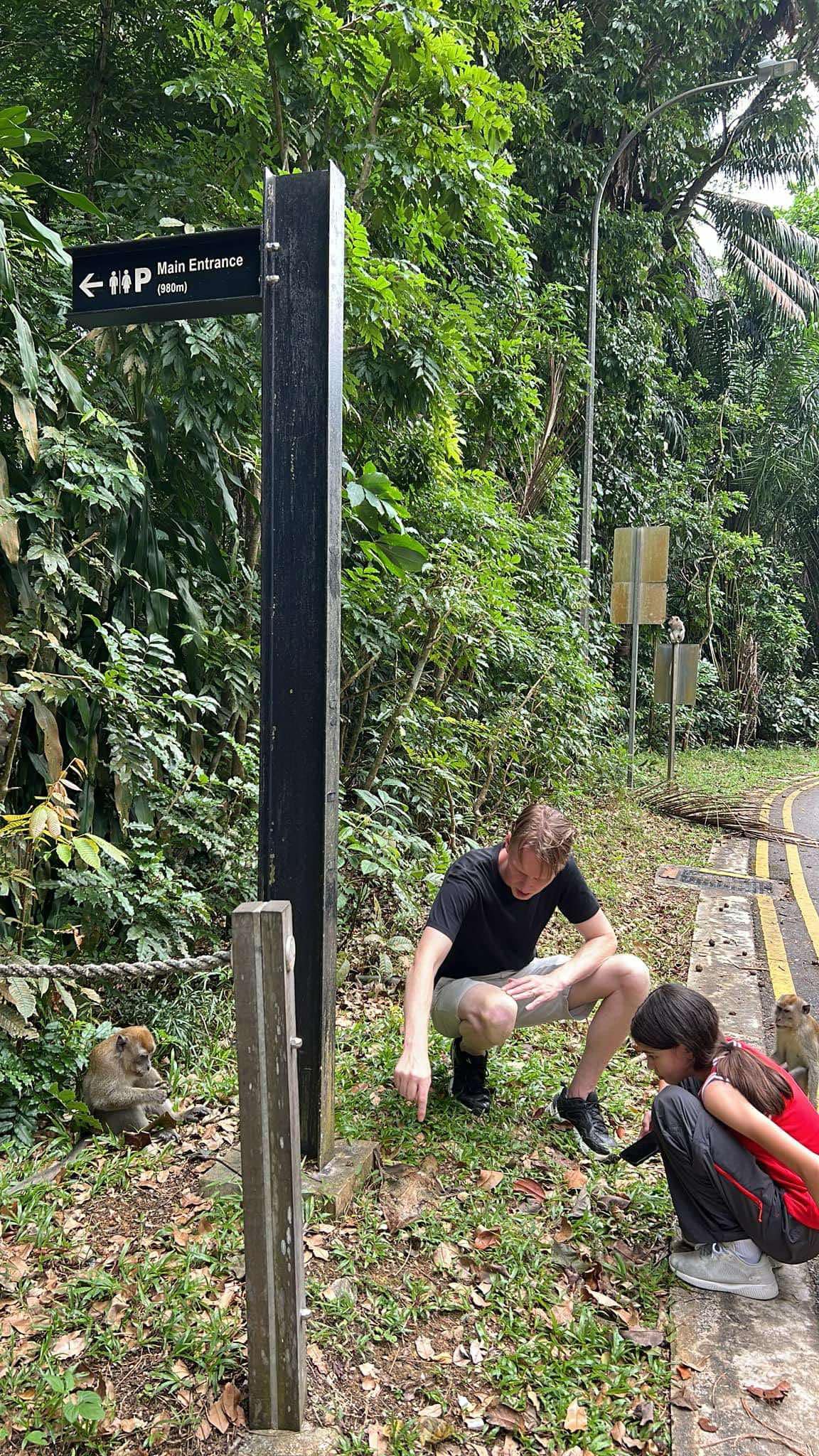 Photo courtesy of Elaine Seah.
Photo courtesy of Elaine Seah.
You can also see two macaques sitting nearby, inquisitively watching the colugo.
Oh, and a third macaque too, perched on a signpost a bit further back.
Colugo seemed distressed
According to Fergusson-Stewart, the colugo seemed distressed, being surrounded by macaques.
Fergusson-Stewart explained: "Macaques are mostly fruit eaters, but will eat meat opportunistically, so we were concerned that the colugo could be in danger."
The family thus kept an eye on the colugo and ensured that it was safe from the macaques.
"Maybe they were just curious but maybe it could have escalated, so we carefully moved in close to create a buffer between the colugo and the macaques while we called Acres (Animal Concerns Research and Education Society) for advice," Fergusson-Stewart said.
That was when Islay noticed that the colugo was trying to climb the metal signpost but kept slipping down:
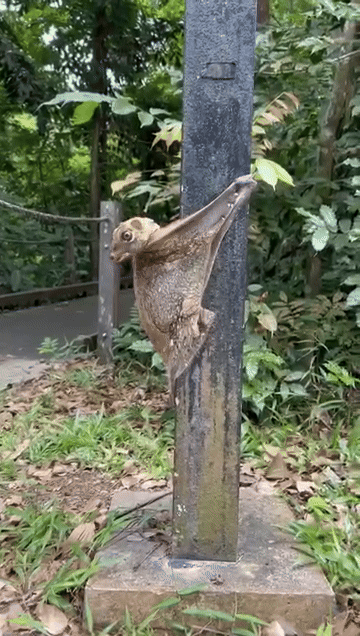 GIF from Elaine Seah.
GIF from Elaine Seah.
"We think maybe this is what caused it to end up on the ground in the first place. We knew we had to get it to a real tree so it could climb to a safe place," Fergusson-Stewart said.
He then called the Acres for help, though they were about "half an hour away" and could not immediately head down to help the colugo.
Nevertheless, according to Seah, Acres was "great" and gave the family advice over the phone on how to deal with the colugo .
"They gave us great advice, including, don’t feed it, help to protect it from the macaques and anything else. They also asked if there were any visible injuries, which thankfully there were not," Seah said.
Herded it to a tree
The family then herded the colugo to a nearby tree that it could climb.
"We didn’t want to pick it up as that might have injured it, so we gave it a free path to a tree and crouched closely on the other side," Fergusson-Stewart said.
"They are gliders and don't move well on the ground, but it slowly moved away from us back towards the forest," he added.
The colugo made it up the tree by about 4m before the family left:
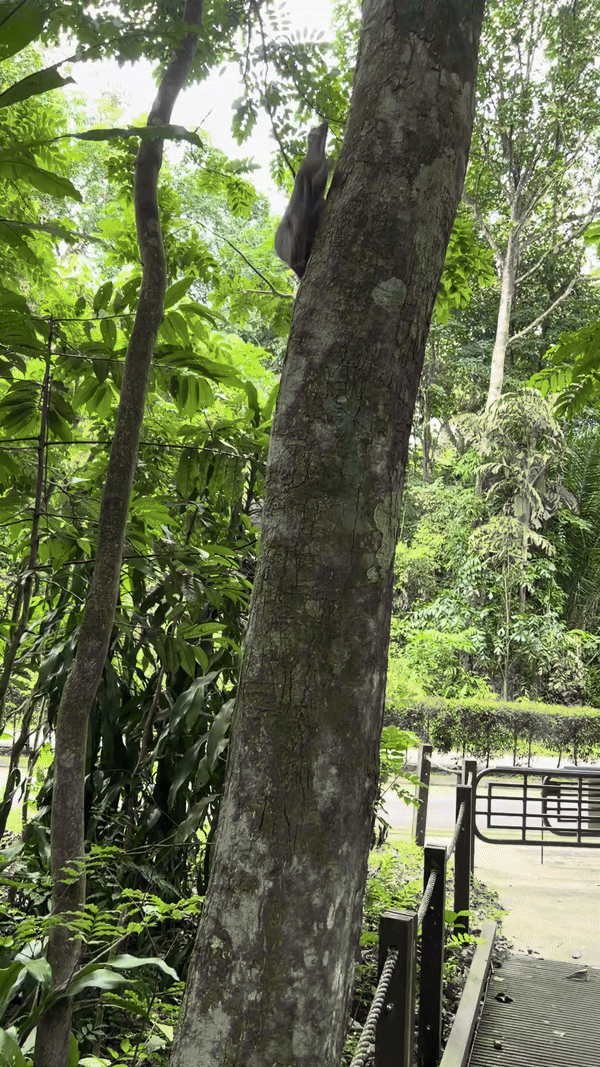 GIF from Elaine Seah.
GIF from Elaine Seah.
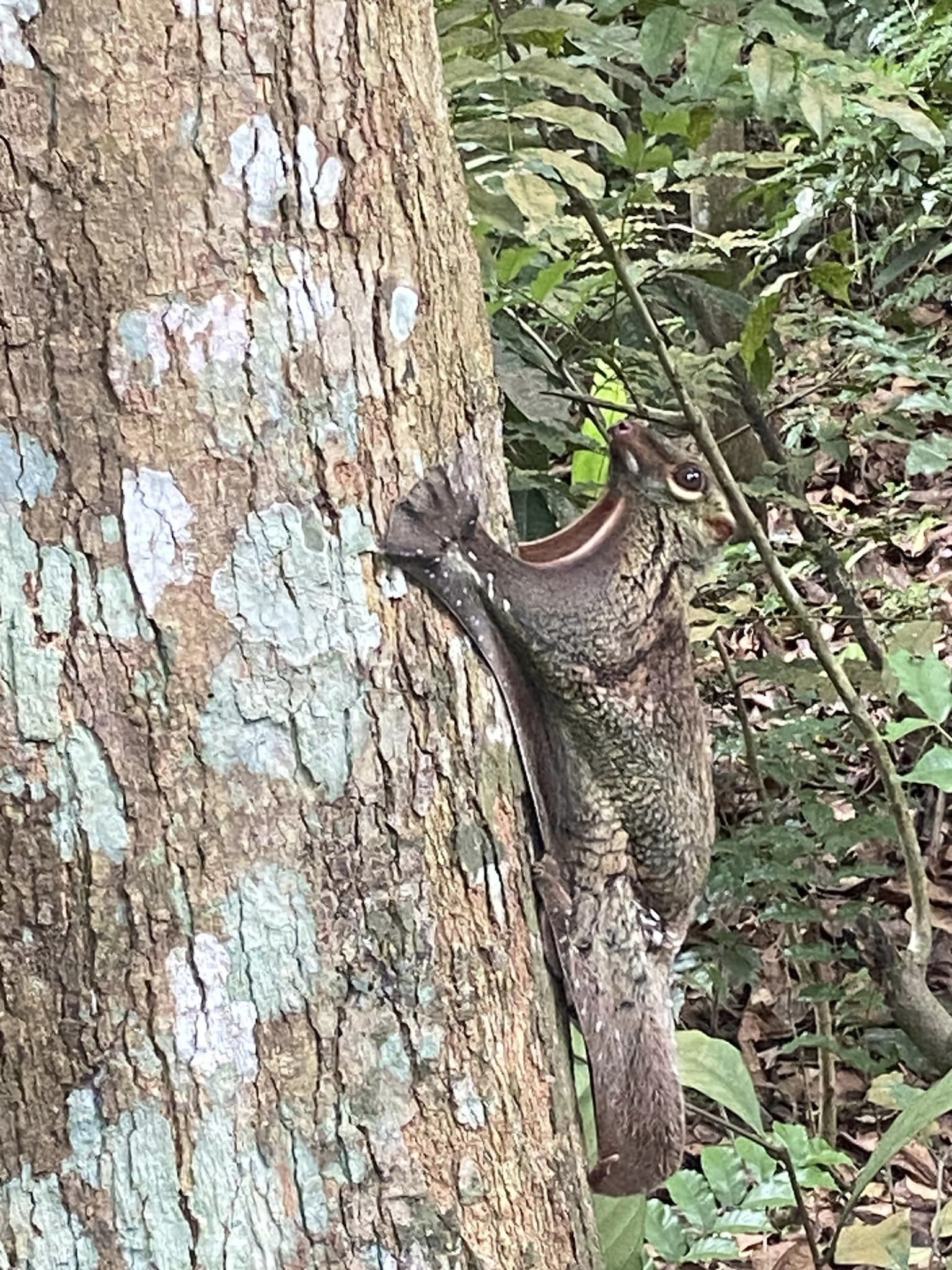 Photo by Elaine Seah.
Photo by Elaine Seah.
More about colugos
The Malayan, or Sunda colugo (Galeopterus variegatus) is a solitary, nocturnal and arboreal creature, according to the National Parks Board (NParks).
They are usually found clinging to tree trunks or suspended from horizontal branches. They mainly feed on leaves and young shoots.
Their large, adorable eyes provide them with excellent night vision.
They are generally mottled grey or greenish-grey, though some are reddish to yellowish-orange. Male colugos are predominantly reddish.
Helplines
If you see a wild animal in distress, you can contact:
- Acres Wildlife Rescue Hotline (24-hour) at 9783 7782
- NParks Animal Response Centre: 1800 476 1600
Top photo courtesy of Elaine Seah and Islay Fergusson-Stewart.
MORE STORIES


















